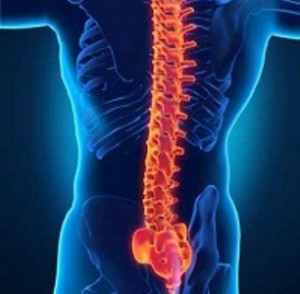The Kashin-Bek disease refers to degenerative diseases of the ODE endemic. The basis of disease – violation of the processes of ossification and termination of growth of tubular bones. This leads to deformation of the joints, complicated osteophytosis. So sometimes the Kashin-Bek disease is considered as endemic deforming osteoarthritis.
General information
Detailed description of the disease did Kashin N. I. in 1859 and the E. V. Beck in 1906-m. the Main zone of distribution of the disease – Transbaikalia, near the Creek Level, but it is found in various regions of Eastern Siberia, and also in Korea and China, Kyrgyzstan, Primorsky region and the European regions of Russia.
Sick of both sexes, mostly teenagers and children. The fact that the disease develops in the human organism only in the period of rapid bone growth in 6-14 years. 4-year-old children the illness is not clear, and people over 25 is extremely rare. Patients usually stunted and the tree-creeper.
Reasons
Theories about the causes of the disease several. The most logical seems to be the mineral theory of Vinogradov asserts that the root of the problem – unbalanced content of microelements and calcium in the body, as well as a high concentration of manganese, strontium and iron in the water (or soil and food) of the area where outbreaks of the disease.

Chinese experts have proposed the hypothesis of hypomelanism, according to which soil and water is not enough villages. Anyway, urovsky disease is associated with the imbalance of trace elements, so it is based on the wrong food. It is believed that another contributing factor is rickets.
Symptoms
In adolescents the disease Kashin-Beck goes unnoticed and is extremely slow. The early symptoms are as follows:
Primarily affects the interphalangeal joints of the hands. The disease can progress in the field of wrist, elbow and other joints. Intermittent pain, aching, occur in the evening and at night. Syndrome may occur “blockade of the joint” – in the case of pinching a “joint mouse”.
Allocate 3 degrees of severity of the disease:
- Moderate thickening of the interphalangeal joints. Affected second, 3 and 4 fingers. Movements are restricted (elbow, wrist, ankle joints), pain is felt during exercise.
- Multiple joint involvement. Is accompanied by their deformation, thickening and limitation of mobility and crunch.
- Deformation of all joints. At this stage, dramatically slowed the growth of the patient, there is a flat foot, bear foot, a short neck, duck gait.
On severe stages of the lesion are possible and such symptoms are:
- pain in the heart;
- headaches;
- wrinkled skin;
- poor appetite;
- dull hair and nails.
Diagnosis

Problem help to identify the following types of diagnostics:
- X-ray pattern. A curious paradox: on the x-ray signs of disease are seen better than by visual inspection. At an early stage clearly visible symmetric deformation. Spine with multiple cartilaginous nodes. There are “bottle-like” changes and spondylosis deformans.
- Differential diagnosis. The symptoms of the disease are compared with similar symptoms other diseases related to the violation of bone growth (endocrine lesions, rickets). The thickening of the cartilages and the epiphyses are also observed in acromegaly. Multiple deformation characteristic of osteoarthritis – but only in old age.
Treatment
If you start treatment at an early stage, has a 30 percent chance of reversibility of the process. In the later stages, we can delay the process, increase mobility and reduce pain. The patients are phosphorus and calcium, biological stimulants (ATP, aloe, fibs, vitreous body) and resort to massage, remedial gymnastics, physio-balneotherapy.
Prevention
Prevention depends not only on the patient, how many from the region in which it resides. In soil and water is eliminated the lack of calcium, is soil salinity, created a special animal farm based on mineral feeding of cattle.
In addition, there must be a supply of artesian water and imported products. Lactating and pregnant women, teenagers and children twice a year are given vitamins and calcium preparations. Medical supervision of patients in children’s hospitals is increasing. The best solution is to move from an endemic region more prosperous.




You overlooked something?
Just commenting to show my support. Your opinion is well structured Great job!